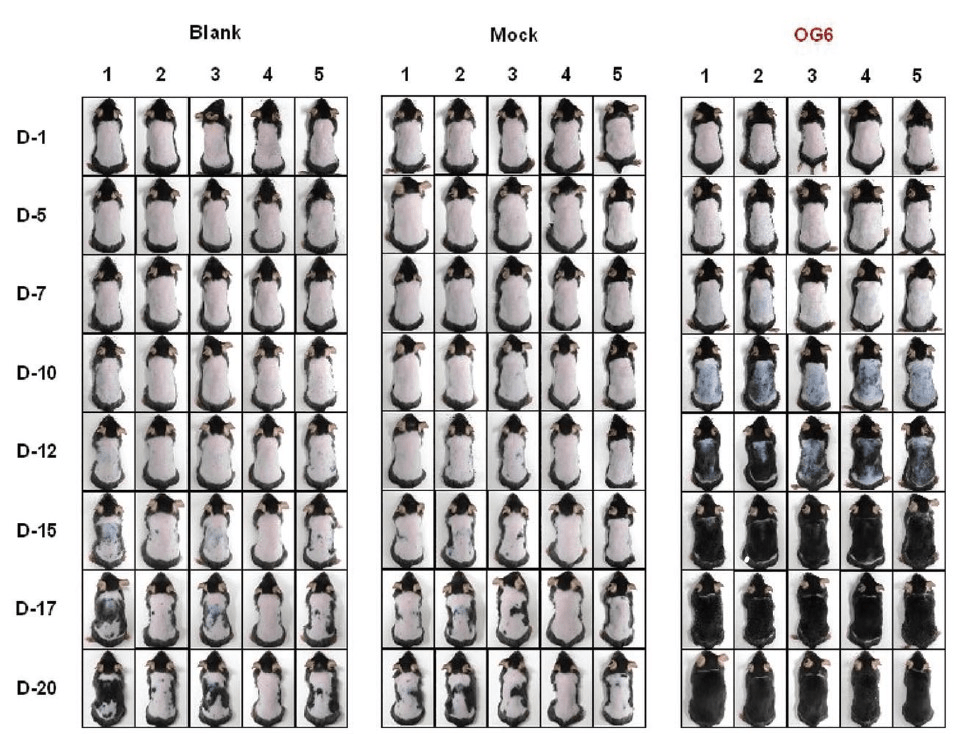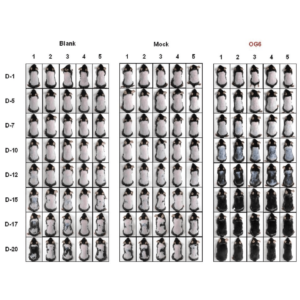A groundbreaking study conducted by a team of researchers led by Chunming Wang from the University of Macau, in collaboration with scientists from the University of Nanjing and Wenzhou Medical University, has unveiled the potential of an oligosaccharide biomaterial known as OG6 in stimulating hair growth. Published findings shed light on OG6’s ability to harness the crucial role of regulatory T (Treg) cells in orchestrating the hair follicle cycle, offering promising insights into a novel therapeutic approach for addressing hair loss.
THE ROLE OF CARBOHYDRATES IN HAIR GROWTH
OG6 constitutes a segment of the glucomannan polysaccharide, consisting of six sugar units. The intake of dietary carbohydrates plays a significant role in shaping the development and functionality of regulatory T cells (Tregs). During the anagen phase of hair follicle growth, Tregs exhibit a predilection for localizing around the hair follicle, particularly in the bulge region where hair follicle stem cells (HFSCs) are situated. The recruitment of Tregs to specific areas is orchestrated by cytokine/chemokine signaling pathways. For additional details view the full article Unmasking Chemokine-Inducing specificity in Oligosaccharide Biomaterial to Promote Hair Growth.
STUDY RESULTS
The findings from the study indicate that OG6 exhibited several notable effects:
- Selectively increased the expression of the CCL5 gene.
- Led to an increase in the percentage of skin pigmentation, percentage of hair coverage, and the diameter of new hair growth, as depicted in Figure 1.
- Accelerated the transition from the telogen to the anagen phase in depilated telogen-stage mice following intradermal injection.
- Had minimal impact on the typical markers associated with pro/anti-inflammatory macrophage polarization.
- Induced the migration of regulatory T cells (Tregs) both in vitro and in vivo, as illustrated in Figure 2.


CLINICAL POTENTIAL FOR THE FUTURE
The results of the study propose that OG6 could present a fresh therapeutic strategy for enhancing hair growth in humans. Through the recruitment of regulatory T cells around hair follicles, OG6 has demonstrated potential in stimulating hair regeneration in mice. These findings pave the way for the development of glycan-based therapeutic interventions with enhanced precision and safety, offering prospective advantages to individuals in search of effective treatments for hair loss.
CONCLUSION
While the translation of preclinical findings to human trials poses inherent challenges, the potential clinical implications of OG6 underscore the significance of further research in this domain. With hair loss presenting a widespread concern affecting millions worldwide, OG6 stands poised at the forefront of scientific advancement, marking a significant stride in the ongoing quest for effective hair loss remedies. As research endeavors continue to unfold, OG6 holds promise as a beacon of hope for individuals seeking viable solutions to hair loss woes.

